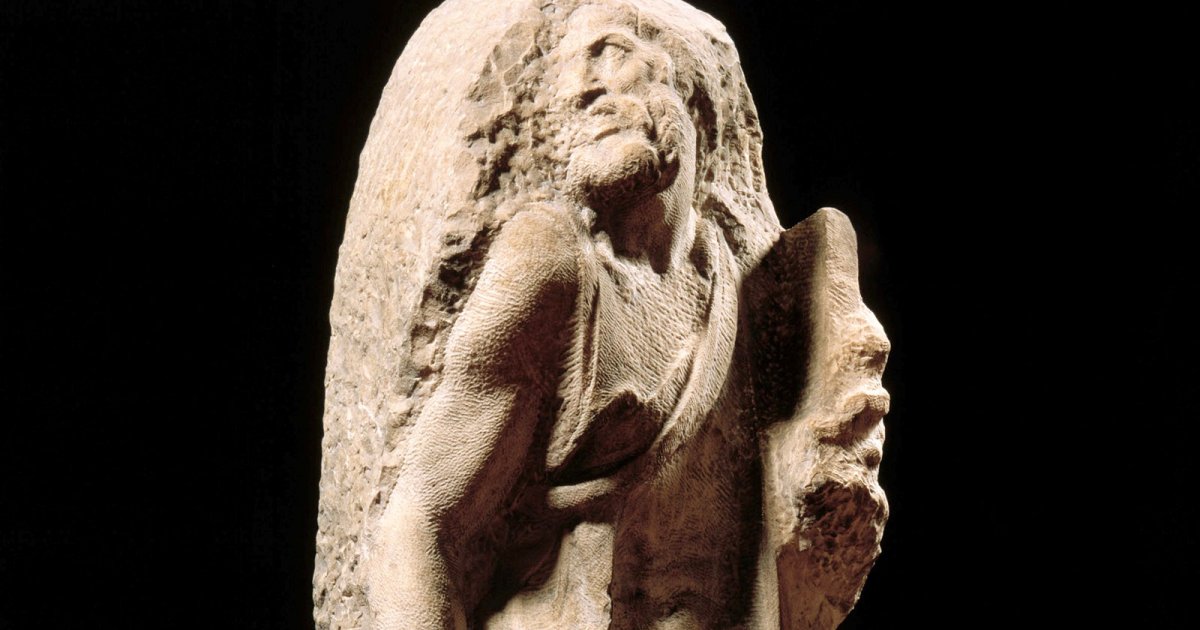ACCADEMIA, St. Matthew
 Language: English / USA
Language: English / USA
Like the Prisoners, St. Matthew is also by Michelangelo; you can see it on the right side of the hallway between the Young Slave and the Bearded Slave, and it is also unfinished.
This marble statue is 2.16 meters tall and was commissioned in 1503 by the Opera del Duomo di Firenze, or the Cathedral Works Museum: the assignment included the creation of over-sized statues of the twelve apostles for the pillars under Brunelleschi's dome. The artist took on too much work and was forced to give up the project, and the only thing that remains is in fact the statue of St. Matthew in front of you.
Keep in mind that the statue was intended to be placed in a rather deep niche, and so it was made to be seen only from the front, and not from below as is usually the case. The saint's body looks like it's twisting, as if driven by an extraordinary internal force that seems to drag it upwards. A step at the lower left of the sculpture forces the figure to bend a leg, while the other remains extended. The arms also have a similar pattern: the position of his flexed right arm is opposed to his extended left arm, while his head and shoulders are rotated, causing the figure to lose his frontal shape and gain more dynamism.
Once again, Michelangelo proves he is both is a connoisseur of tradition and an innovator at the same time. This pose is called "contrapposto" (if an arm advances, the corresponding leg retracts, and vice versa). The figure of the apostle transmits an overwhelming energy that's urging him to overcome the boundaries imposed by matter and free himself.
Just like the Prisoners surrounding the sculpture, the unfinished stage commonly known as Michelangelo's "non-finito", or non-finished work, almost gives you a live image of the Tuscan artist's unique work process; he would progressively remove marble from a stone block until he revealed the shape that was hidden inside. Next to St. Matthew is an unfinished marble group known as Palestrina Pietà, which is clearly influenced by Michelangelo, but the experts disagree as to whether or not he personally created the sculpture.
FUN FACT: after the death of Lorenzo de' Medici, also known as Lorenzo the Magnificent, Michelangelo found himself without work and without a home. Lorenzo's son Piero, also known as Il Fatuo, commissioned a snow statue from Michelangelo! He accepted and made another masterpiece, which unfortunately melted, never to be seen again.



